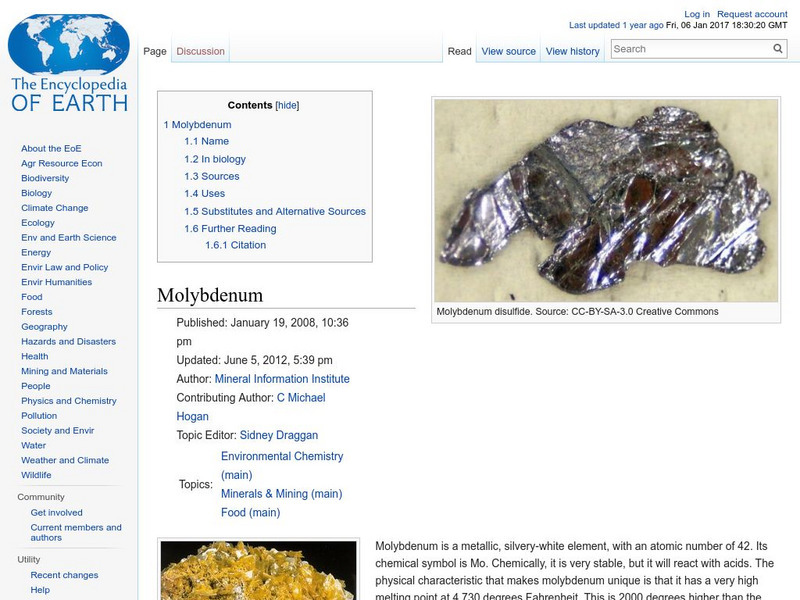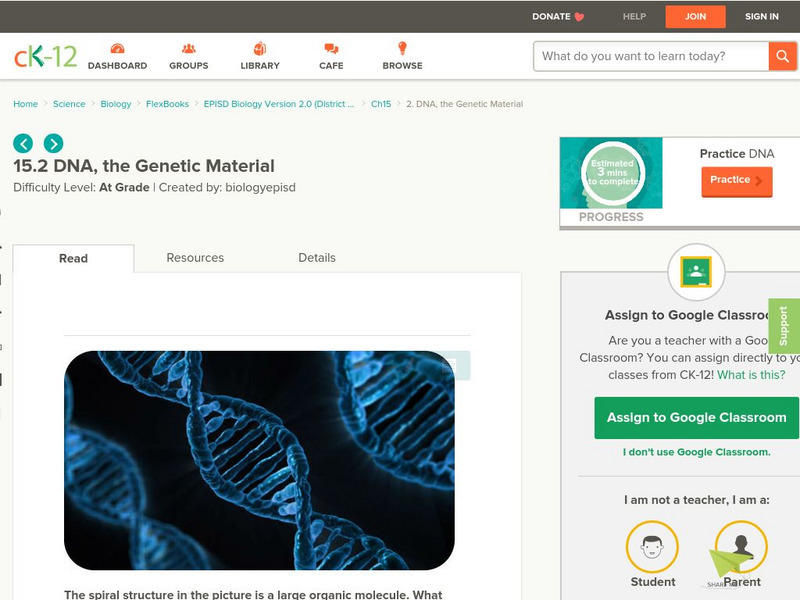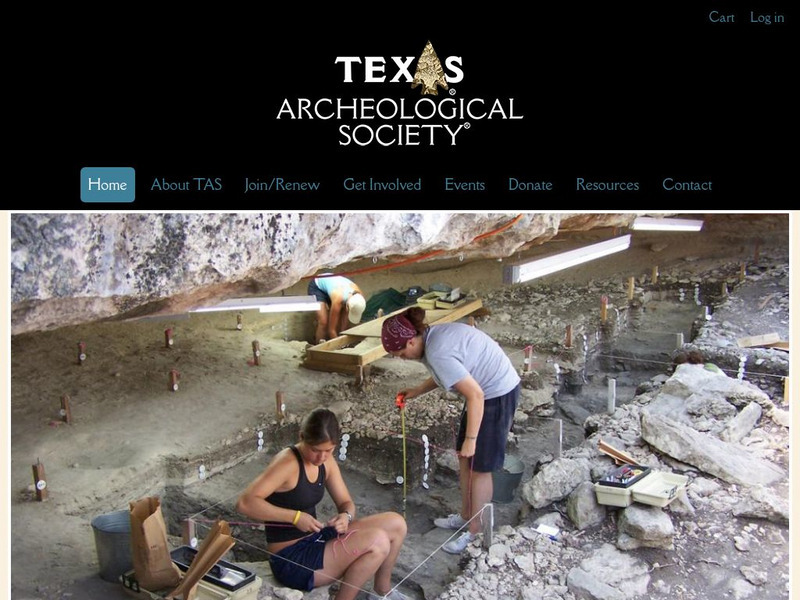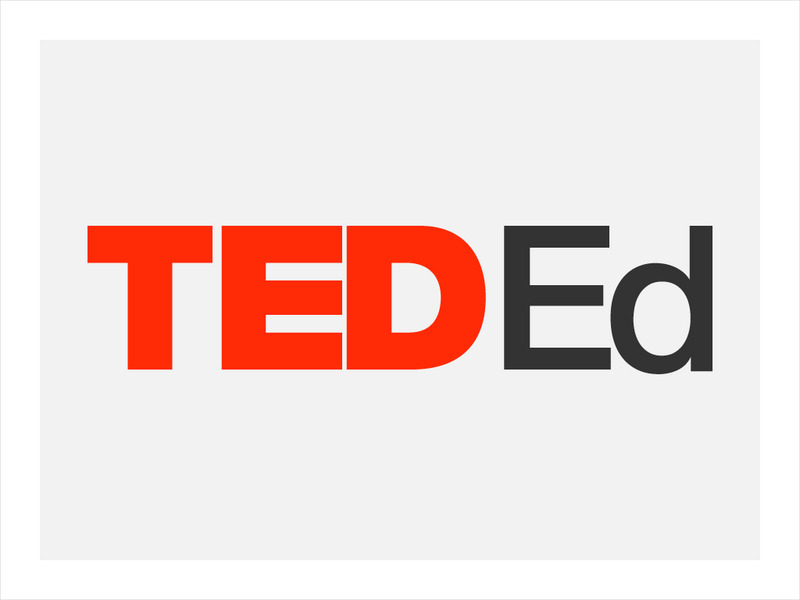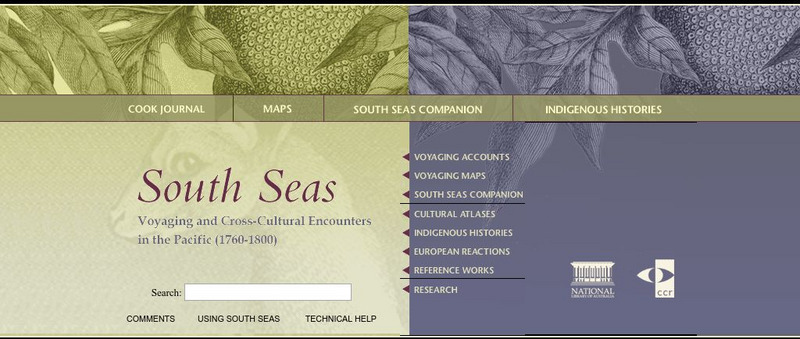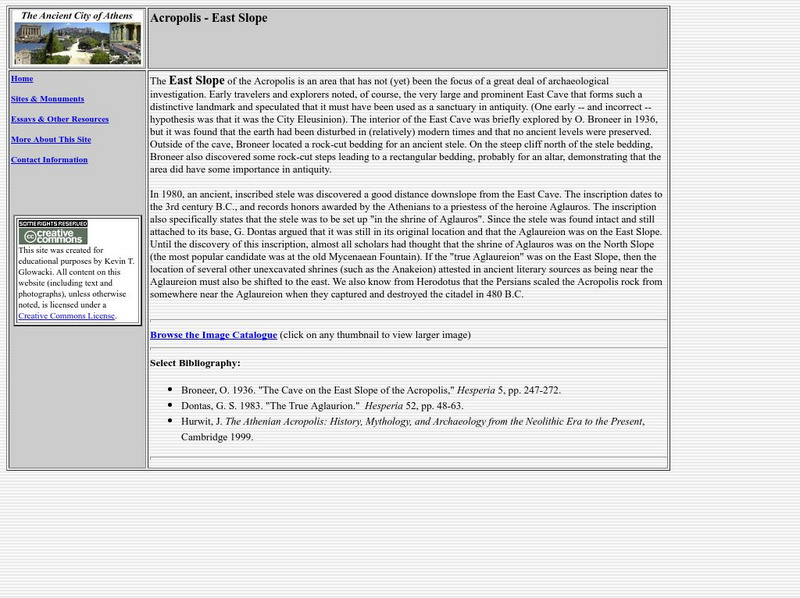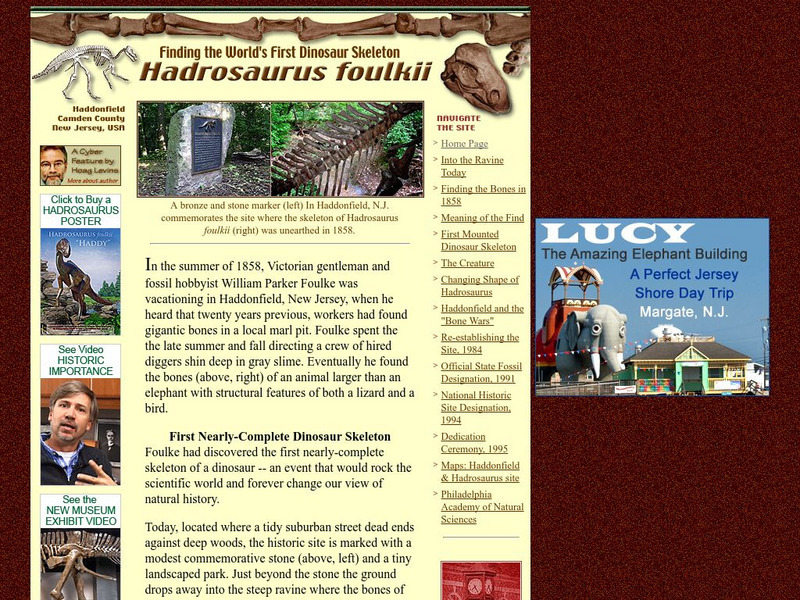Next.cc
Next: Rivers
Learn how rivers work and the importance of them by completing the five activities. Explore rivers further by clicking on one of the numerous links provided.
Encyclopedia of Earth
Encyclopedia of Earth: Molybdenum
Information about the metallic element, Molybdenum, atomic number 42. It is unique in having an extremely high melting point. Covers its discovery, its biological importance, its physical and atomic properties, how abundant it is on the...
University of California
Uc Berkeley: Ethiopian Fossils From 6 Million Year Old Hominid
In this article from 2004, UC Berkeley reports that additional fossils have been found from the 2001 discovery of Ardipithecus kadabba. This find holds great importance because it is suggested that it may represent the first species...
CK-12 Foundation
Ck 12: Dna, the Genetic Material
[Free Registration/Login may be required to access all resource tools.] DNA is the genetic material in your cells passed on to you from your parents and determines your characteristics. Learn about transformation and how DNA was...
University of Utah
University of Utah: learn.genetics: Ptc: The Genetics of Bitter Taste
Read about the PTC gene, and listen to scientists discuss this accidental discovery which lead to important clues about human evolution.
Other
The Texas Archeological Society
A superb resource for teachers of social and natural sciences, as well as for parents and youth. Links take you to educational sites that explain the "acheological process and discovery," to lesson plans on fitting archeology into the...
Ohio State University
Ohio State University: Chronology of John Herschel Glenn
This resource offers a chronology of John Glenn from his birth in 1921 to the present, including important events from his early spaceflights, his political career, and his return to space on board the Space Shuttle Discovery in 1998.
Curated OER
Study of the Dead Sea Scrolls
This site calls the 20th century 'the century of discovery' because of the large number of artifacts found. It cites the Dead Sea Scrolls as one of the most important discoveries ever. Additionally this site provides general and...
Curated OER
Study of the Dead Sea Scrolls
This site calls the 20th century 'the century of discovery' because of the large number of artifacts found. It cites the Dead Sea Scrolls as one of the most important discoveries ever. Additionally this site provides general and...
Curated OER
Smithsonian Institution Archives: Florence Barbara Seibert (1897 1991)
Biochemist Florence Barbara Seibert (1897-1991) developed the skin test for tuberculosis. After graduating from Goucher College, she worked as a chemist during World War I and then went to Yale University, where she earned a Ph.D. and...
Famous Scientists
Famous Scientists: Linus Pauling
This biography will give you information about the life and important scientific discoveries made by Linus Pauling. His discoveries led him to be rewarded the Nobel Prize twice.
TED Talks
Ted: Ted Ed: Rosalind Franklin: Dna's Unsung Hero
The discovery of the structure of DNA was one of the most important scientific achievements in human history. The now-famous double helix is almost synonymous with Watson and Crick, two of the scientists who won the Nobel prize for...
PBS
Nova: Mystery of the First Americans
Read the transcript of the NOVA program about Kennewick Man, how he was found, and why his discovery was so important.
Other
National Library of Australia: South Seas: Captain Cook
South Seas is an online reference guide to Captain James Cook's momentous first Pacific voyage of discovery (1768-1771). As well as providing the full text of Cook's journal and other important contemporary accounts of the voyage, it...
Everything ESL
Everything Esl: Soaring High With Kites
Dynamic unit on kites which can be used to teach about weather, wind, flight, and inventions. Teach students about the importance of kites in many cultures and the significance of kites as a scientific discovery.
National High Magnetic Field Laboratory
Magnet Academy: Heike Kamerlingh Onnes
Heike Kamerlingh Onnes was a Dutch physicist who first observed the phenomenon of superconductivity while carrying out pioneering work in the field of cryogenics. An important step on the way to this discovery was his success in...
National High Magnetic Field Laboratory
Magnet Academy: Karl Alexander Muller
In their search for new superconductors, Swiss theoretical physicist Karl Alexander Muller and his young colleague, J. Georg Bednorz, abandoned the metal alloys typically used in superconductivity research in favor of a class of oxides...
Annenberg Foundation
Annenberg Learner: Chemistry Timeline
An interactive timeline that marks the important people, events, and discoveries in the world of chemistry.
Khan Academy
Khan Academy: The Rosetta Stone
The Rosetta Stone is one of the most important objects in the British Museum as it holds the key to understanding Egyptian hieroglyphs-a script made up of small pictures that was used originally in ancient Egypt for religious texts....
Other
The Stoa Consortium: Acropolis: The East Slope
The East Slope of the Acropolis is an area that has not (yet) been the focus of a great deal of archaeological investigation. Early travelers and explorers noted, of course, the very large and prominent East Cave that forms such a...
Other
Hadrosaurus.com: Finding the World's First Dinosaur Skeleton:hadrosaurus Foulkii
Hadrosaurus foulkii was the very first dinosaur skeleton ever found. It was excavated in 1858 from a field in New Jersey. The story of the discovery, the excavation and the huge impact this had on the scientific world are described in...
BiologyWise
Biology Wise: Functions of a Centrosome and Its Role in Cell Division
Discusses the discovery of centrosomes, their important role in mitosis in animal cells, and their other functions.
Character Lab
Character Lab: Self Control
"The most important scientific discovery about self-control is that it can be taught."-Walter Mischel This article offers tips on how to encourage self-control in others.

